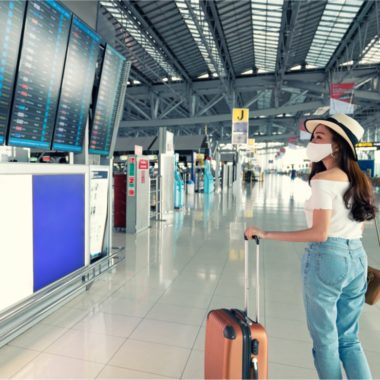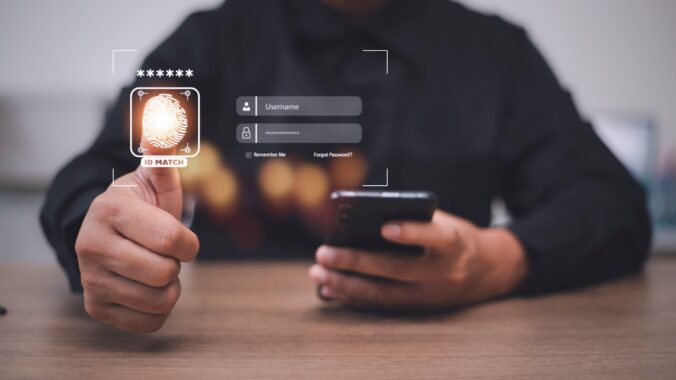‘This article first appeared on Philippe Vallee’s LinkedIn’
The impact of COVID-19 on the travel industry has been dramatic. For over three months, flights around the world have been grounded as travel has become limited by necessity to slow the transmission of the virus. This downturn has had a material impact on airlines globally, with several carriers having to downsize or seek financial intervention from respective governments.
Now, with more flights in the air including various air bridges between countries with low infection rates, the airline and airport industries are preparing to adapt to a post-pandemic landscape. This includes a strict set of limitations such as social distancing, minimum contact points and preventing unwell passengers from travelling. As well as complying with these new regulations, airports face the ultimate challenge of rebuilding passenger trust in the process of travelling by air again.
These are two barriers that travel operators need to tackle as international travel inches back toward normality.
Fortunately, technology has a key role to play in the reopening of airports, aiding in the prevention of the further spread of the virus and bolstering consumer confidence. While travel is unlikely to return to a pre-lockdown normality until there is a vaccine, effective but convenient tech-enabled measures need to be put in place quickly.
Technology to enforce social distancing
With social distancing remaining a key recommendation from the World Health Organisation (WHO) even as lockdowns around the world start to lift, airports face the challenge of having to limit overcrowding, all the while acknowledging that airport buildings are designed with bottlenecks for the purposes of security and safety.
Security checks, for example, have funnelling and queuing baked in as a key procedure to allow staff to carry out necessary checks on successive passengers without being overwhelmed. Airside retailers, cafés and bar are also limited in the amount of space they can offer consumers, owing to restrictions of the footprint. Regulating passenger flow through the infrastructure is therefore key if airports are to enforce social distancing while still leaving enough time for each passenger at the airport.
Occupancy management technology can play an important role here. Machine learning-based algorithms regulate the flow of passengers by only allowing them to move forward into sterile areas once the occupancy rate is deemed acceptable. Under this system, passenger priority is determined by the real-time monitoring of departure times and then enforced through existing airport equipment – meaning that if a flight is delayed, for example, the boarding pass reader will not allow passengers on that flight to go through security. As a machine learning technology, it also learns passenger movement patterns, helping airport operations teams understand when flash points might occur.
Additionally, airports also can provision passengers with anonymous wearable tags purely for the duration they are in the airport. The aim of the tag is to empower passengers with the ability to maintain social distancing – beeping when two tags interact for a certain period at a specified and customisable distance. This technology can also help operations staff carry out traffic control, helping to understand areas where people are naturally congregating, for example.
These measures are an effective way for airports to avoid overcrowding in a way that doesn’t inconvenience passengers or restrict their access to on-site hospitality. It will also help airport managers prevent having to materially change the layout of their buildings, thereby keeping costs down.
Hands-free terminals
Technology can also play a key role in minimising the number of surfaces that passengers will touch as they move through the terminal.
Biometric identification, which underpins the facial recognition technology used at self-service security checkpoints, can in theory be applied end-to-end across the passenger’s journey. The principle is simple and transparent; a passenger is given a unique temporary ID when they check-in from home. This token then follows the passenger through bag-drop, security, immigration and boarding, before being deleted once they board their flight.
This fundamentally reshapes the airport experience – heavily reducing the number of interactions with staff and scrambling to find documentation at every step of the way. The ensuing benefits are an enhanced and vastly more convenient experience for passengers.
Health checkpoints to reduce transmission
As health officials around the world attempt to supress a second spike of the virus, the role of airports to act as gateways for sanitary control is very important. As well as helping to fight the contagion, this is a key measure in helping restore passenger confidence in flying.
Once again, technology can play an important part here in equipping airports with the ability to identify markers of infection. Temperature checks, for example, can be carried out by fitting existing CCTV networks with thermal imaging equipment to help control centre staff to spot at-risk passengers before they might even be aware of infection themselves. This can also be paired with more traditional swabbing stations as part of an all-encompassing screening process.
Alongside symptom screening questionnaires, this can enable airports to build up a picture of infection as well as possible routes of contagion, becoming a powerful tool to help understand the spread of the virus. This data can then be used by authorities to determine ongoing measures, whether that’s localising lockdowns or re-introducing quarantine measures if the number of arriving infections starts to increase. In sum, the richer the dataset, the more capably we’ll be able to fight the virus.
—
Like many other sectors, air travel is facing unprecedented levels of disruption. It needs to think quickly to rebuild passenger confidence and minimise ongoing damage – and technology provides the answers. In fact, airports themselves are uniquely positioned to fight the spread of the virus and can use its unique infrastructure to its advantage. In doing so, the industry can show other sectors – transport and beyond – how a proactive approach to beating the virus can reap rewards.
Find out more about how my colleagues can help you rebuild passenger trust in flying again here: https://www.thalesgroup.com/en/group/journalist/magazine/how-restore-passenger-trust-air-travel
You can also find the link to our on-demand webinar, which addresses COVID-19 challenges at airports and how we can restore passenger trust here: https://www.bigmarker.com/thales-digital-events/Regaining-passenger-trust-to-fly-again-Thales-solutions-for-airports-post-COVID3-2020-07-23-02-00-am?utm_bmcr_source=replay



